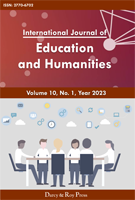Analysis of the Success of The Netflix Korean Drama the Glory from The Perspective of Cross-cultural Communication
DOI:
https://doi.org/10.54097/sp9jbg04Keywords:
Korean TV drama, Netflix, The Glory.Abstract
Korean TV dramas have been popular in Asia since the late 20th century and continue to be widely watched in countries like Japan and China. Initially focusing on romance and idol dramas, Korean dramas have expanded their themes to include innovations inspired by Western productions, covering genres such as zombies and politics, resulting in an increasingly diverse range of content. Moreover, in recent years, collaborations between Netflix and Korean TV dramas have further enhanced Korea's cultural exports. This article will analyze the success factors of Netflix's collaboration with Korean TV dramas, focusing on aspects such as scriptwriting, audiovisual language, and marketing strategies, using the TV drama "The Glory" as a case study.
Downloads
References
Kim, T. (2022) 'Cultural politics of Netflix in local contexts: A case of the Korean media industries', Media, Culture & Society, 44(8), pp. 1508–1522. Available at: https://doi.org/10.1177/01634437221111917
Park, J. H., Kim, K. A., & Lee, Y. (2022) 'Theorizing the Korean Wave| Netflix and Platform Imperialism: How Netflix Alters the Ecology of the Korean TV Drama Industry'.
Nam, S. (2013) 'The Cultural Political Economy of the Korean Wave in East Asia: Implications for Cultural Globalization Theories', Asian Perspective, 37(2), pp. 209–231.
Bing, J., & Ko, C. (2021) 'Expanding Our Presence in Korea: Netflix Welcomes the New Year with Two New Production Facilities', Netflix. Available at: https://about.netflix.com/en/news/expanding-our-presence-in-korea-netflix-production-facilities
Jang, G., & Paik, W. K. (2012) 'Korean Wave As Tool For Korea’s New Cultural Diplomacy', Advances in Applied Sociology, 2, pp. 196–202. Available at: https://doi.org/10.4236/aasoci.2012.23026
Suparsad, V. (2022) 'Posthuman subjectivities: Bollywood Nollywood film Namaste Wahala and the transnational transferability of post-colonial contemporary urban femininities', Agenda, 36(1), pp. 74–82.
Hall, E. T. (1980) The Silent Language.
Smith, P. K., & Thompson, F. (2014) 'What works best to help stop bullying in schools?', Retrieved from https://theconversation.com/what-works-best-to-help-stop-bullying-in-schools-28865
Khodami, M. A., Seif, M. H., Koochakzadeh, R. S., Fathi, R., & Kaur, H. (2022) 'Perceived stress, emotion regulation and quality of life during the Covid-19 outbreak: A multi-cultural online survey', pp. 514-518. Available at: https://doi.org/10.1016/j.amp.2021.02.005
Kim, S. (2009) 'INTERPRETING TRANSNATIONAL CULTURAL PRACTICES', Cultural Studies, pp. 736-755.
Xu, X. (2015) 'The success of Korean dramas from the perspective of cultural export'.
Navarro, C., & Monclús, B. (2021) 'The curation of European Netflix catalogues on social media: The key role of transnational and local cultural traits', Critical Studies in Television, 16(4), pp. 347-374.
Jiang, C., & Hao, T. (2018) 'Short Video Culture in the Perspective of Fascination Theory - A Case Study Based on Jitterbug', Journalism and Writing, pp. 32-39.
Harris, C. E. (2021) 'The cinematic-televisual: Rethinking medium specificity in television's new Golden Age', in Hudelet, A. & Crémieux, A. (eds.) Exploring Seriality on Screen: Audiovisual Narratives in Film and Television, London and New York: Routledge, pp. 53–76.
Downloads
Published
Issue
Section
License
Copyright (c) 2024 International Journal of Education and Humanities

This work is licensed under a Creative Commons Attribution 4.0 International License.

















